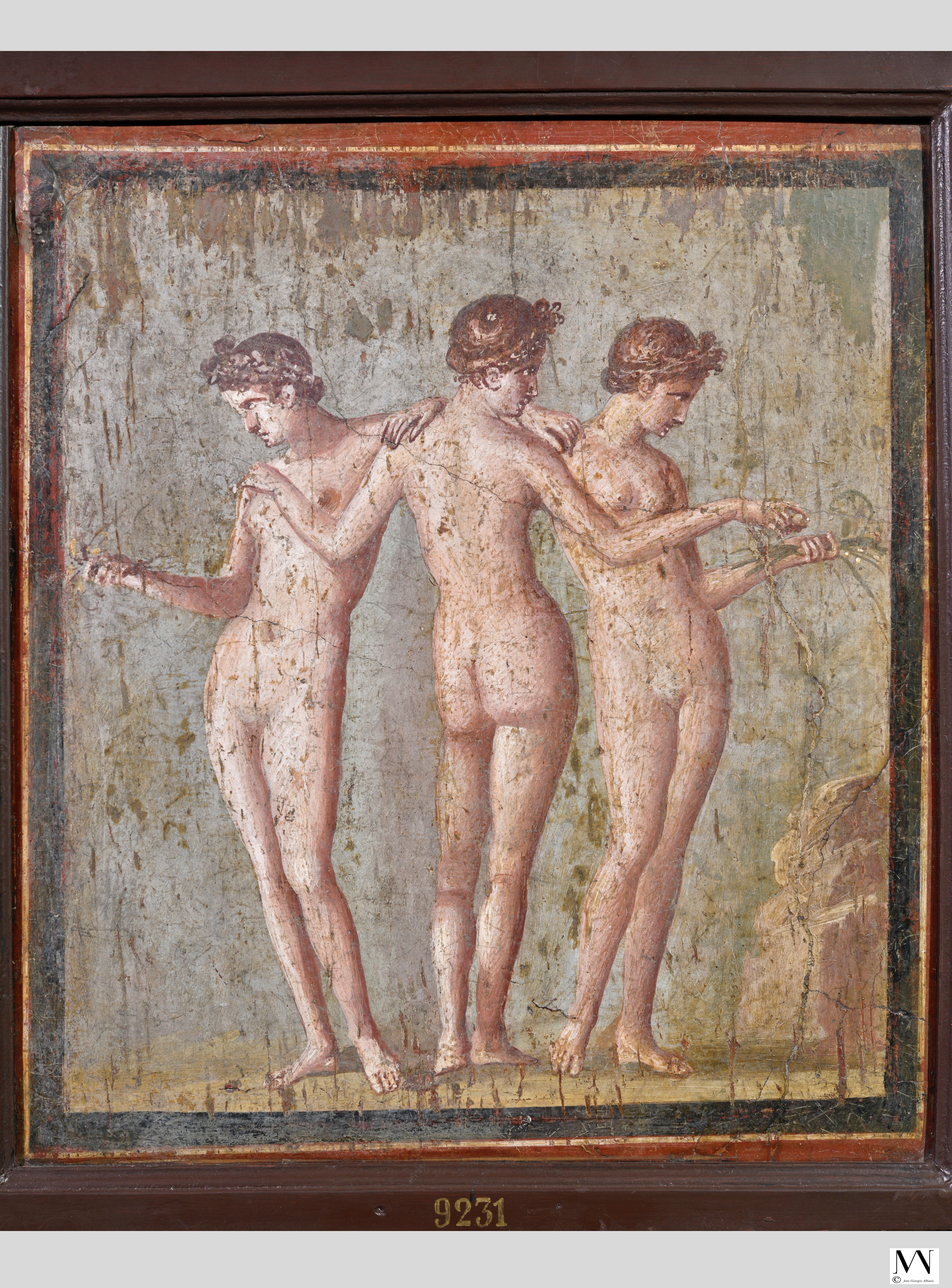
Right now, in the center of Manhattan, anyone can enter a veritable portal to the ancient world. Thirty-five frescoes transported from the National Archaeological Museum of Naples have arrived at New York University’s Institute for the Study of the Ancient World to appear in the exhibition “Pompeii in Color: The Life of Roman Painting.”
Pompeii lives on in our collective imagination because of its tragic history. When Mount Vesuvius erupted in A.D. 79, the entire city and surrounding areas were smothered by piles of volcanic ash and pumice, wiping out the inhabitants instantly. Underneath the wreckage however, the ancient city was astonishingly well preserved and serves as a kind of time capsule of moments leading up to the explosion.
Archaeologists have been fascinated with the ancient city, and excavations have helped shed light on daily life in Pompeii. In one villa, the so-called House of the Painters at Work, researchers found that the home was in the midst of renovations when Vesuvius erupted. Inside the house, a half-finished fresco was found, surrounded by bowls of pigments and plaster, tools, and scaffolding, leading to a greater understanding of the painting technique and appreciation for the many frescoes that were preserved.
Other frescoes on view depict mythological scenes, landscapes, and architectural renderings, portraits, and imaginative scenes of daily activities. “The remarkably well-preserved frescoes from lost villas invite us to see beyond the ashes of the tragic city,” the organizers of the show aid, “and instead experience the vibrant world of the ancient Roman home as the Pompeians themselves knew it.”
Below, see images of the frescoes on view.
The Institute for the Study of the Ancient World at NYU is currently closed due to health restrictions, but an online portal is available to the public until the galleries reopen.
Hercules and Omphale (1st century CE), Herculaneum. Image © Photographic Archive, National Archaeological Museum of Naples.
Mask amid bunches of grapes and vines (1st century CE). House of V. Popidius or House of Mosaic Doves, triclinium 13, east wall, central section, Pompeii. Image © Photographic Archive, National Archaeological Museum of Naples.
Still-life fragments representing vase, scrolls, landscape, and fruit (1st century CE), Herculaneum. Image © Photographic Archive, National Archaeological Museum of Naples.
Small cup with blue pigment (1st century CE), Pompeii. Image © Photographic Archive, National Archaeological Museum of Naples.
Painter at work (1st century CE), House of the Surgeon, Pompeii. Image © Photographic Archive, National Archaeological Museum of Naples.
Polyphemus and Galatea ( 1st century BCE), Villa at the Royal Stables on Portici, Pompeii. Image © Photographic Archive, National Archaeological Museum of Naples.
Hercules and Omphale (1st century CE), House of Marcus Lucretius, triclinium 16, east wall, central section, Pompeii. Image © Photographic Archive, National Archaeological Museum of Naples.
Achilles on the Island of Skyros (1st century CE), House of Achilles or House of the Skeleton or House of Stronnius, cubiculum u, north wall, central section, Pompeii. Image © Photographic Archive, National Archaeological Museum of Naples.
Architectural landscape (1st century CE), House of the Peristyle, Pompeii. Image © Photographic Archive, National Archaeological Museum of Naples.
Banquet scene with inscribed words (1st century CE), East wall, central section, House of the Triclinium, Pompeii. Image © Photographic Archive, National Archaeological Museum of Naples.